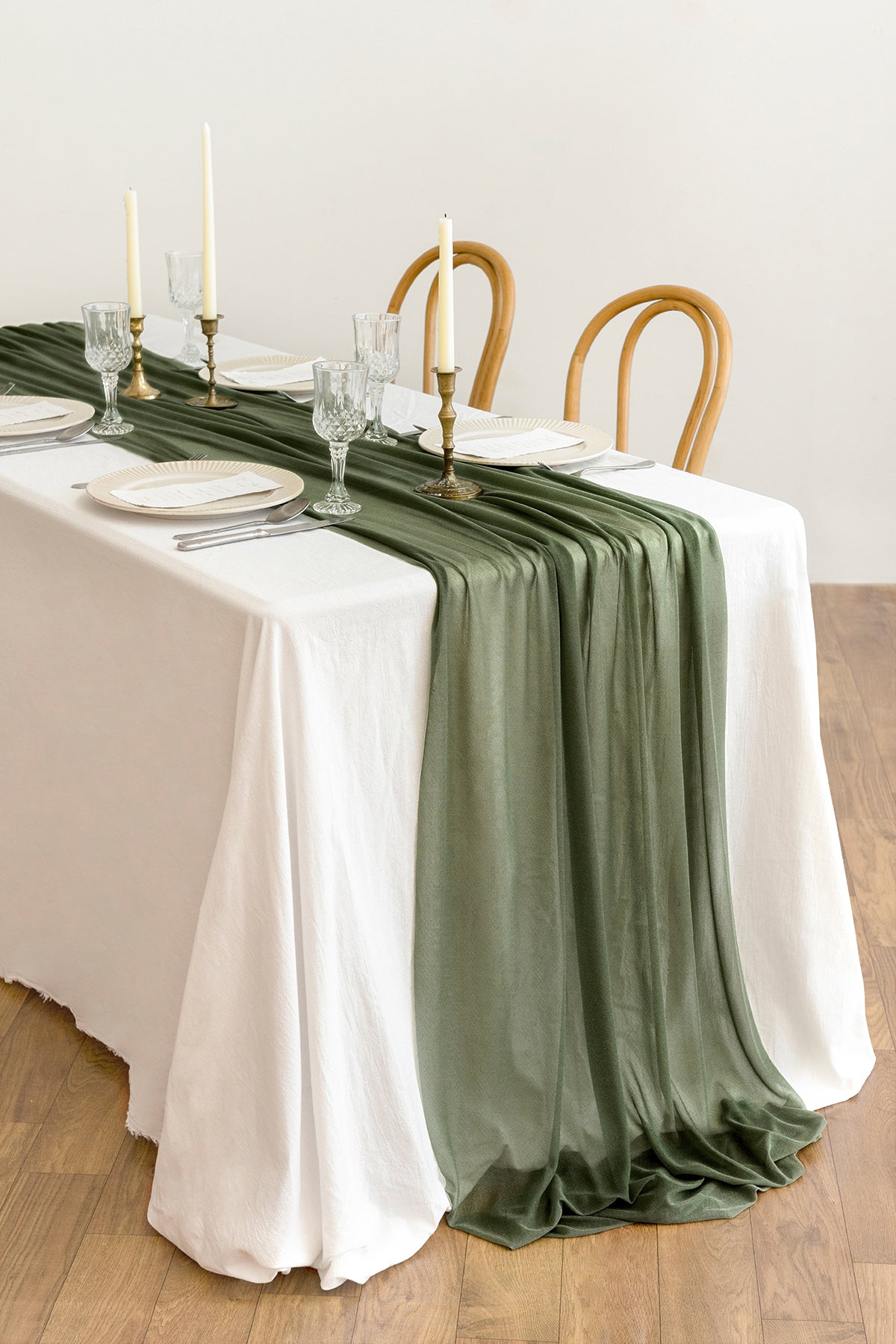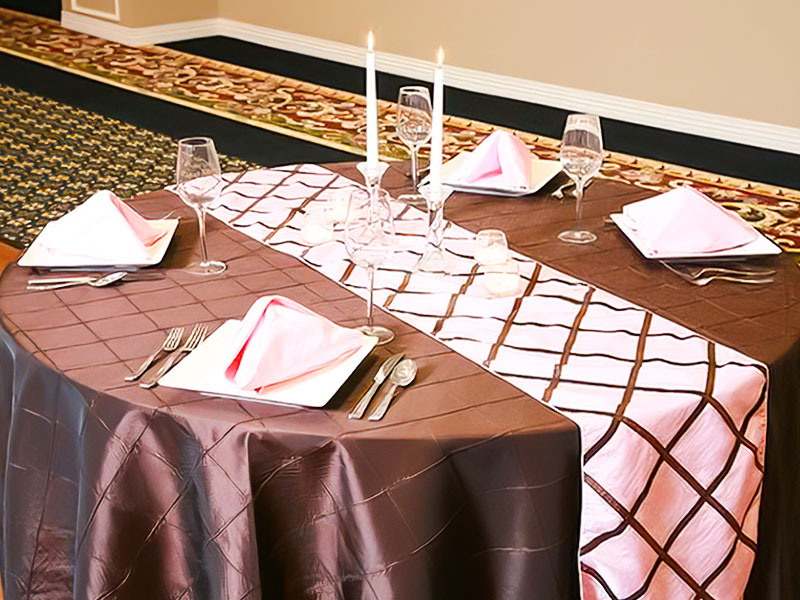Just how to Select the Perfect Table Runner for Your Table
Just how to Select the Perfect Table Runner for Your Table
Blog Article
Linen Textile Technologies: Exploring Modern Trends and Creative Applications in Style and Textile Market
From lasting production methods to cutting-edge weaving innovations, the development of linen is reshaping the landscape of the textile market. As we delve right into the realms of innovative design applications and the emergence of linen blends and crossbreed materials, a new phase unfolds in which bed linen's function in future fabric technologies takes facility phase.
Sustainable Practices in Bed Linen Production
Lasting practices in bed linen production have come to be increasingly essential in the fabric sector's efforts to minimize ecological impact and advertise ethical sourcing methods. Bed linen, an all-natural fiber acquired from the flax plant, supplies a range of benefits such as biodegradability, longevity, and breathability. However, standard methods of bed linen production can entail considerable water intake, chemical use, and energy-intensive processes.
To attend to these difficulties, lots of fabric suppliers are embracing sustainable practices throughout the bed linen production procedure. This consists of sourcing flax from natural farms that avoid damaging pesticides and chemicals, executing water-efficient retting methods to remove fibers from the flax stalks, and utilizing environmentally friendly dyes and coatings. Additionally, some companies are purchasing renewable resource resources to power their manufacturing centers and minimizing waste via recycling and upcycling initiatives.
Technical Advancements in Bed Linen Weaving
With the growing focus on sustainable practices in linen manufacturing, the fabric industry is now observing a rise in technological improvements specifically aimed at reinventing the art of bed linen weaving. These technologies are reshaping the method linen materials are created, supplying increased efficiency, high quality, and creativity in weaving techniques.
Among the crucial technical improvements in bed linen weaving is the integration of digital looms. These innovative looms are geared up with software application that allows for intricate and complex layouts to be woven with accuracy. By digitizing the weaving process, makers can accomplish greater consistency and precision in their bed linen fabrics.
Additionally, developments in thread spinning technology have enabled the manufacturing of finer and more long lasting bed linen yarns - table cloths. This leads to softer and smoother bed linen textiles that retain their top quality also after multiple usages and washes
In addition, the advancement of environment-friendly dyeing procedures and finishes for linen materials is gaining traction. These sustainable techniques not just minimize the environmental impact however additionally accommodate the boosting customer demand for ethically generated textiles.
Creative Design Applications for Linen
Cutting-edge creative methods are significantly forming the creative design applications for linen in the fabric market. Bed linen's natural visual allure and ability to blend with other fabrics make it a preferred choice for producing one-of-a-kind garments and devices that provide to the eco mindful consumer.
In addition, designers are explore bed linen in home decoration, using its breathable and resilient nature to craft elegant furnishings such as curtains, bedding, and upholstery. The texture and drape of linen bring a feeling of elegance and comfort to interior spaces, including a touch of sophistication to contemporary homes.

Bed Linen Blends and Crossbreed Fabrics

Hybrid textiles, on the other hand, take the concept of blending click for more info a step even more by integrating extra elements such as metallic threads, recycled materials, or conductive fibers. These cutting-edge textiles not only broaden the layout opportunities but also introduce useful elements like conductivity, antimicrobial residential or commercial properties, or improved longevity. Hybrid fabrics are progressively being made use of in various industries, consisting of fashion, indoor style, and technical textiles, where the need for multifunctional products is on the surge.
Linen's Duty in Future Textile Innovations

In the realm of future fabric developments, bed linen is expected to be a principal in the development of advanced functional materials. Scientists and designers are checking out ways to enhance linen's integral high qualities via technical innovations, such as incorporating clever fabrics, nanotechnology, and efficiency coatings. These advancements aim to elevate bed linen's performance features, making it suitable for a broader series of applications, from activewear to protective clothing.
In addition, the mix of linen with various other natural or synthetic fibers opens up unlimited opportunities for producing unique textiles with distinct homes and capabilities. By leveraging linen's attributes and checking out innovative blends, the fabric market is positioned to present exciting growths that cater to progressing customer requirements and sustainability demands.
Final Thought
Finally, the exploration of lasting techniques, technological improvements, creative design applications, linen blends, and its function in future textile innovations highlight the continual advancement of linen fabric in the contemporary layout and fabric industry. With a focus on development and imagination, the convenience and read review green nature of bed linen make it a valuable material for designers and makers alike, leading the method for more developments and innovations in the area of textiles.
As we delve into the worlds of creative design applications and the emergence of linen blends and crossbreed textiles, a brand-new phase unfolds in which bed linen's role in future fabric innovations takes center phase.
Checking out the blend of bed linen with various other materials has actually led to the emergence of ingenious blends and hybrid fabrics in the modern textile sector. Bed linen blends supply a distinct mix of the features of linen with those of various other fibers, resulting in fabrics that have boosted homes such as increased resilience, boosted draping, and decreased wrinkling.The evolution of linen blends and crossbreed materials has actually established the stage for Linen to play a critical function in driving future fabric technologies.In the world of future textile technologies, linen is anticipated to be an essential gamer in the advancement of innovative practical fabrics.
Report this page